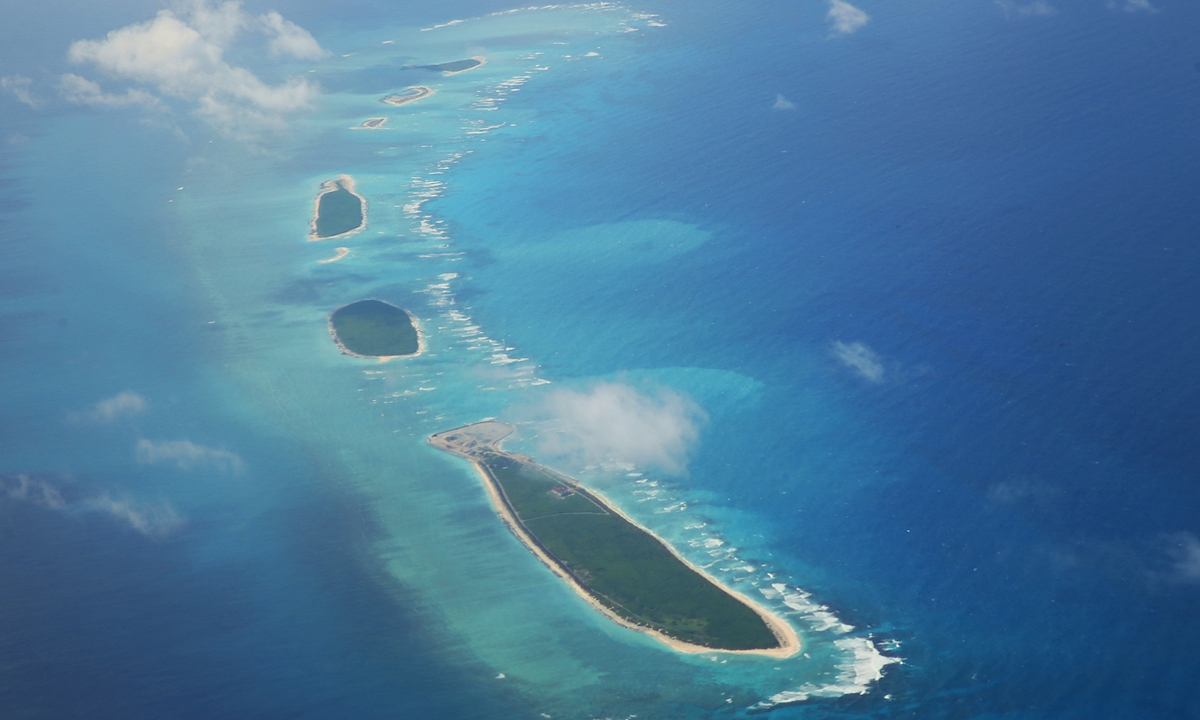
South China Sea Photo: VCG
A Chinese expert said the hype around the so-called "West Philippine Sea" is nothing new and should not be taken too seriously as the South China Sea remains the widely accepted name used by the international community after the Armed Forces of the Philippines on Tuesday said it welcomed the report of label change on Google Maps.
Such hype will neither change history nor alter the fact that China holds indisputable sovereignty over the South China Sea islands, the expert said.
AFP reported on Monday that a Google Maps scan on Monday of the body of water directly west of the Philippines now shows a name once invisible to most users -- the West Philippine Sea.
The name South China Sea remains visible to the north and west of the area newly identified as the West Philippine Sea, AFP reported.
Responding to an AFP query, Google did not say why the change was made. "The West Philippine Sea has always been labeled on Google Maps. We recently made this label easier to see at additional zoom levels," a Google spokesperson was quoted as saying in the media report.
"As defenders of national sovereignty, the Armed Forces of the Philippines sees this as a valuable contribution to truthful representation and public awareness," the Armed Forces of the Philippines spokesperson Francel Margareth Padilla was quoted as saying in a report by local news outlet PTV News.
Jay Tarriela, Philippine Coast Guard spokesperson, welcomed news of "the West Philippine Sea" label on Google Maps, the local news outlet The Philippine Star reported.
The hype around the term "West Philippine Sea" is nothing new as the Philippines has been propagandizing it more than a decade ago. The recent change by certain map service providers might be related to Manila's lobbying efforts and coordination with some Western governments and media outlets, Ding Duo, director of the Research Center for International and Regional Studies at the National Institute for South China Sea Studies, told the Global Times on Tuesday.
"However, this does not merit concern. The name 'South China Sea' has long been the internationally recognized name for the body of water," Ding noted.
In 2012, then-Philippine president Benigno Aquino III signed an administrative order renaming South China Sea waters within the western section as the "West Philippine Sea," local media Inquirer reported.
In 2015, Google Maps changed the name of Zhongsha Islands into "Scarborough Shoal," following a so-called online petition, the New York Times reported in July 2015.
Changing the name neither alters historical facts nor undermines China's sovereignty over the islands in South China Sea. It is just a political stunt, Ding noted.
For a long time, the South China Sea has been a universally accepted geographical name, widely recognized by countries around the world and international institutions including the UN, Ding said.
According to the expert, major international organizations — including the International Maritime Organization (IMO), the International Hydrographic Organization (IHO), and the United Nations Commission on the Limits of the Continental Shelf (CLCS) — as well as the vast majority of countries, consistently use "South China Sea" in their English-language official documents. The Chinese government has also long adopted this term in its own official English documents.
"The Philippines' attempts to hype up the term 'West Philippine Sea' do nothing to change the fact that China has indisputable sovereignty over the South China Sea islands — including the Nansha Qundao and Huangyan Dao (also known as Huangyan Island) — and their adjacent waters," Ding added.




